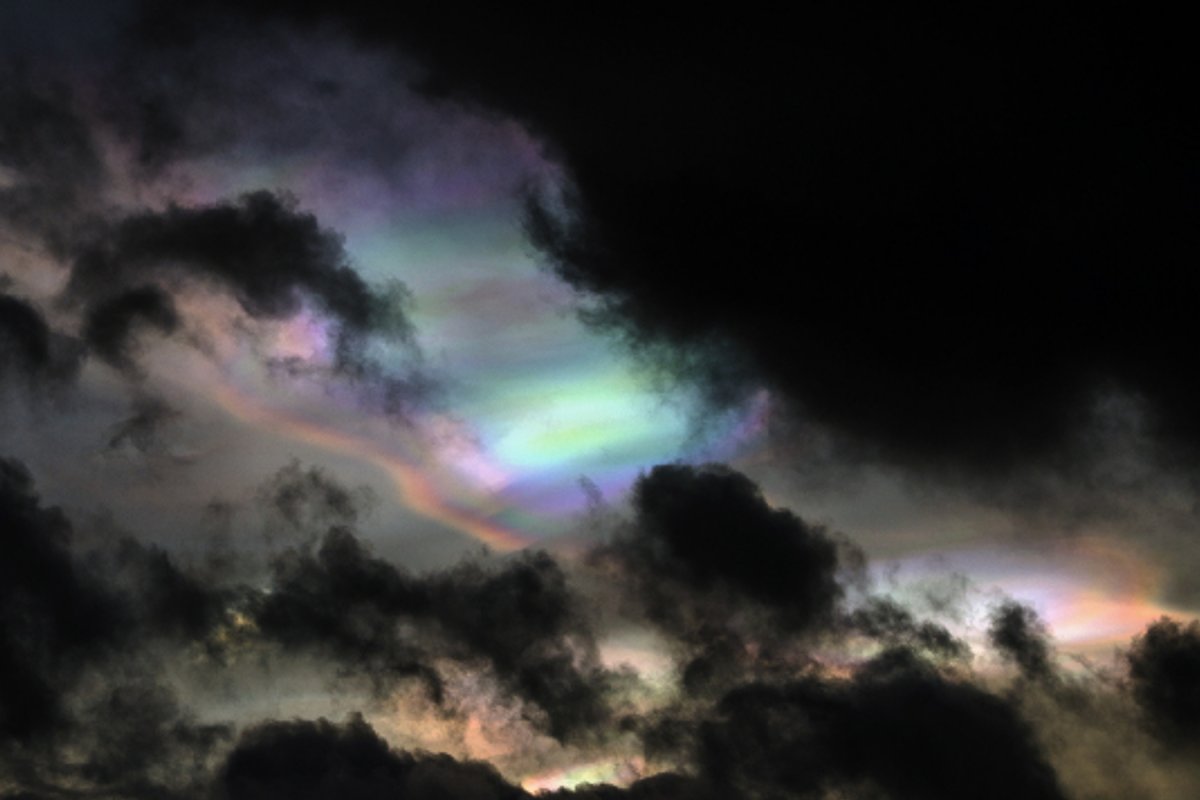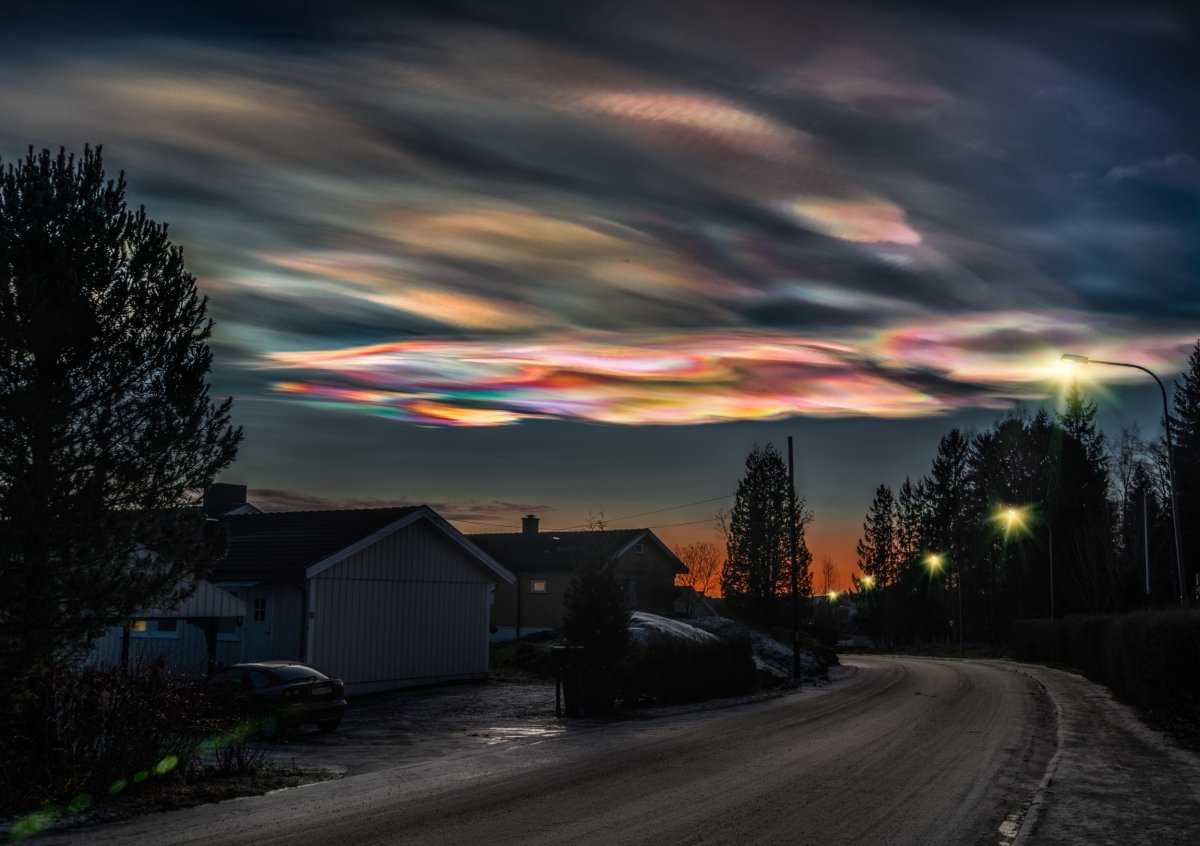Bizarre, beautiful clouds—known as mother-of-pearl clouds because they resemble the inside of a pearl oyster shell—have been caught on camera high in the sky over Norway.
These polar stratospheric clouds were photographed by Norwegian photographer Fredrik Broms from Kvaløya.
"I've been on the lookout for polar stratospheric clouds (PSCs) all winter," Broms told spaceweather.com. "This morning, I caught a split-second glimpse of some really colourful PSCs, and within an hour another gap in the storm clouds revealed a bigger display."
"Some of the clouds were very colorful, including an absolutely stunning greenish cloud surrounded by purple."

Polar stratospheric clouds are very rare, as they occur between 49,000 and 82,000 feet up, in the stratosphere layer of the atmosphere over the Earth's poles, where very few clouds usually form due to a lack of moisture.
They form at extremely cold temperatures, below minus 108 degrees F, due to the trace amounts of moisture in the air turning to tiny ice crystals.
These crystals drift in thin clouds that appear as wispy, iridescent white patches from below, diffracting the light. During the two hours after sunset or before dawn, the redder light from the sun can cause the clouds to glow vividly.
These strange clouds are so rare that they are usually only seen two or three times at most annually, and only during the winter months.

However, these rare and beautiful collections of ice crystals can contribute towards the breakdown of the Earth's ozone layer, according to the U.S. Environmental Protection Agency (EPA).
On the surfaces of the ice crystals, stratospheric chlorine is catalyzed to react and form ozone-destroying compounds such as chlorine monoxide.
These compounds then react with the ozone under the influence of ultraviolet light from the sun, destroying the ozone layer. One atom of chlorine in the stratosphere can destroy more than 100,000 ozone molecules, the EPA states.
The ozone layer provides critical protection to Earth from dangerous ultraviolet rays, which can cause skin cancers.
Additionally, when the clouds are present, they usually contain some nitrous oxides, present in their nitric acid form. Nitrous oxides in the stratosphere prevent the unwanted reactions with ozone, so when they are tied up in the clouds, their damping effect on this reaction is not possible.
If the clouds become large enough that they sink into the troposphere—the lowest, densest part of the earth's atmosphere—this can permanently remove the nitrous oxides from the stratosphere, further worsening the effects on the ozone layer.
Luckily, the ozone layer has been recovering steadily due to the 1987 Montreal Protocol phasing out the use of chlorofluorocarbons (CFC), which also react with ozone under the influence of ultraviolet light.
"It has been estimated, for example, that the Montreal Protocol is saving an estimated two million people each year by 2030 from skin cancer," the United Nations Environment Programme (UNEP) said in a statement.
However, according to the World Economic Forum, the hole in the ozone may not be fully repaired until 2050.
Do you have a tip on a science story that Newsweek should be covering? Do you have a question about rare clouds? Let us know via science@newsweek.com.
Uncommon Knowledge
Newsweek is committed to challenging conventional wisdom and finding connections in the search for common ground.
Newsweek is committed to challenging conventional wisdom and finding connections in the search for common ground.
About the writer
Jess Thomson is a Newsweek Science Reporter based in London UK. Her focus is reporting on science, technology and healthcare. ... Read more
To read how Newsweek uses AI as a newsroom tool, Click here.








